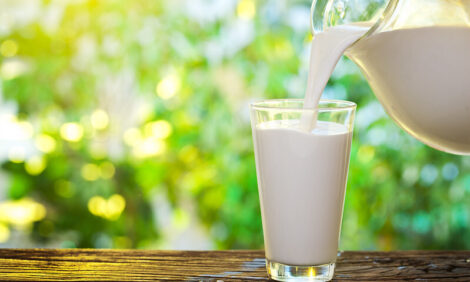



How close are we to producing milk in the laboratory?
Aarhus University in Foulum leads a new and exciting project which is to form the basis for producing sustainable milk in the laboratory as an alternative to cow’s milk. The project is funded by the Novo Nordisk Foundation.
For centuries, milk from dairy cows has been an important nutritional source for billions of people worldwide. However, over the past years, a growing pressure in relation to finding alternatives has arisen because 18% of the greenhouse gas emission in the world derives from domestic animals. In Denmark, dairy cows account for approx. 75% of the amount of the agriculture's emission of methane.
In-vitro biotechnology instead of dairy cows
Senior researcher Stig Purup at Department of Animal Science, Aarhus University, leads a new, big research project called “What do we drink in 2030? In-vitro milk based on cultured cells” which will be launched later in 2021. The project is to contribute to the development of biotechnology, which makes it possible to produce milk outside the cow (in-vitro) – by means of laboratory-cultured mammary cells from a cow. Thus, this is to pave the way for a sustainable alternative to the traditional milk production without compromising the milk’s nutritional content and health-related qualities.
Mammary gland cells from cows cultured in the laboratory
Yet, no in-vitro-based milk products exist on the market. However, drinking products, based on a few milk proteins produced by use of gene-modified yeast, are being developed abroad. According to Stig Purup, the technique used for this cannot be used for copying the hundreds of nutrients and health-beneficial components that are found in cow’s milk.
“However, in-vitro milk based on mammary cells in cultures can maintain this complexity because mammary cells are the cells in the udder responsible for the secretion of milk. By cultivating and inducing lactation (lactogenesis) in these cells in a laboratory, the cells will be able to produce complex milk components equivalent to the valuable nutrients and bioactive components which cow’s milk usually contains,” explains Stig Purup.
However, this type of milk production has several challenges. “Therefore, it is crucial that we generate the basic knowledge on how to develop and optimise the biotechnology for production of in-vitro milk based on mammary cells,” says Stig Purup.
Focus areas of the project
The project will generate knowledge for developing a new biotechnology – a so-called 3D biosynthesis platform for in-vitro milk production based on mammary cells cultured in the laboratory. The specific aims of the project are:
- To determine the optimal time in lactation for isolating cells for in-vitro milk synthesis.
- To optimise cell culture conditions and culturing systems with respect to long-term maintenance and milk secretion.
- To evaluate the similarity in compositional quality and complexity of in-vitro milk secretions compared with cow’s milk.
The primary mammary cells to be used in the project will be isolated from milk from Holstein dairy cows at Denmark’s Cattle Research Centre. Milk samples will be collected from cows at different lactation stages and parities (number of calvings). The project complements an on-going research project called CleanPro (CleanMilk), which Stig Purup is also part of, in which mammary cells for in-vitro milk synthesis are isolated from mammary tissue from cows at slaughter. But in the new project, the activities are spread even more to develop the biotechnology needed and thus to obtaining an even stronger use and up-scaling
Experimental outcome and perspectives
The researchers expect that the results of the project will contribute significantly to research in sustainable food and be essential for enterprises that want to explore novel milk production technology. Together with scalable cell culture techniques, it will support the future industrial productivity of in-vitro milk.
“In the long run, we expect that this biotechnology will have significant impact on food production by providing a new view on milk production and dairy products in-vitro. By offering consumers sustainable and climate-friendly alternatives, and thereby reduce the dependence on milk production from dairy cows, it will eventually contribute to reduce the greenhouse gas emission from the agriculture,” concludes Stig Purup.
TheCattleSite News Desk

